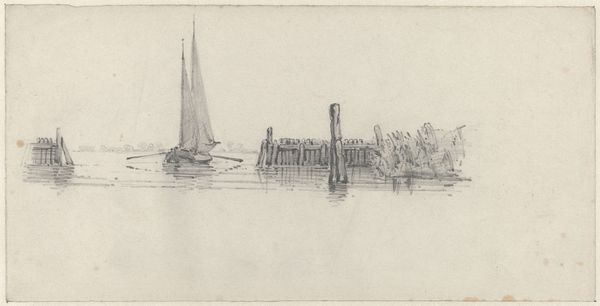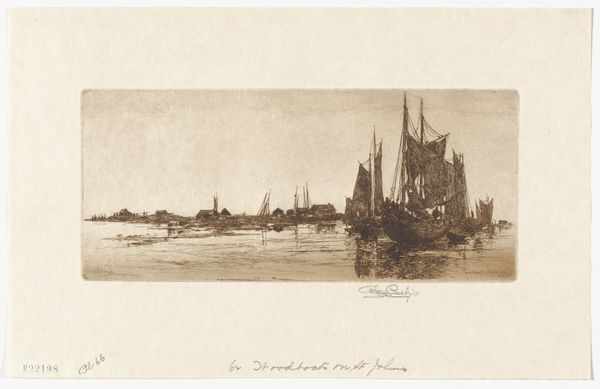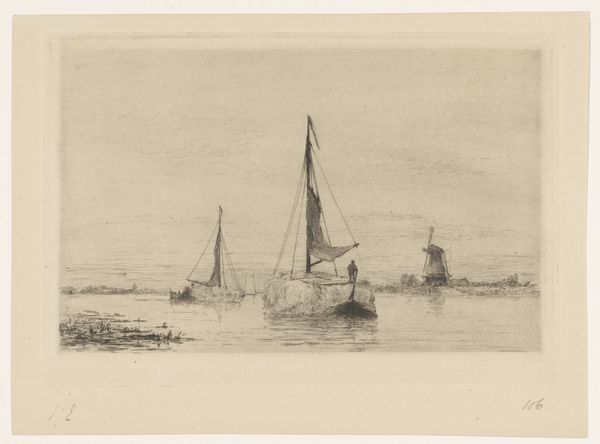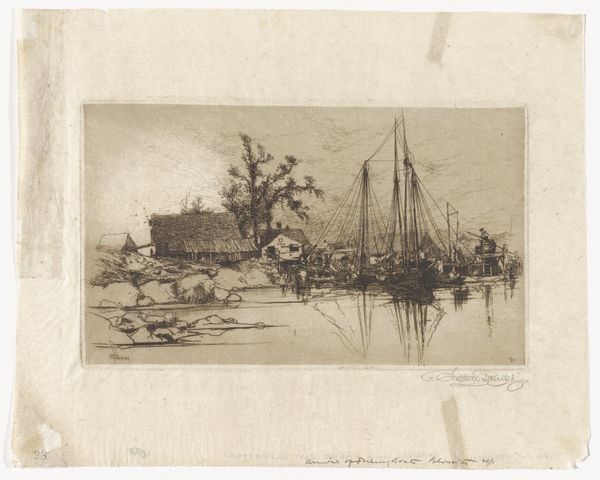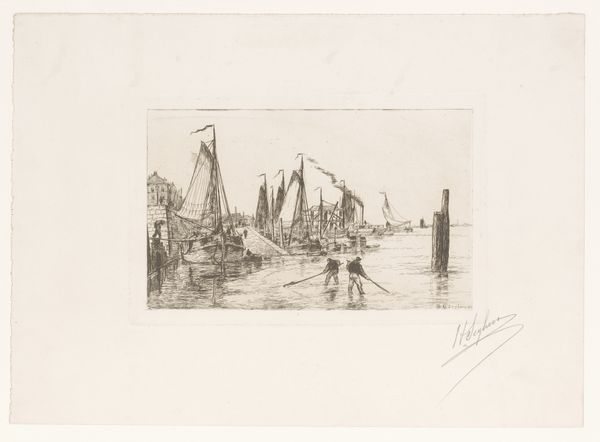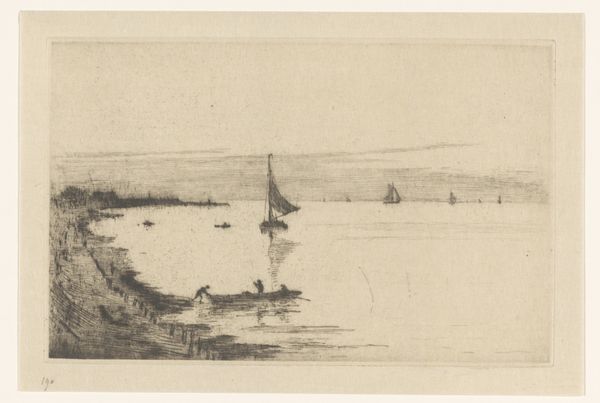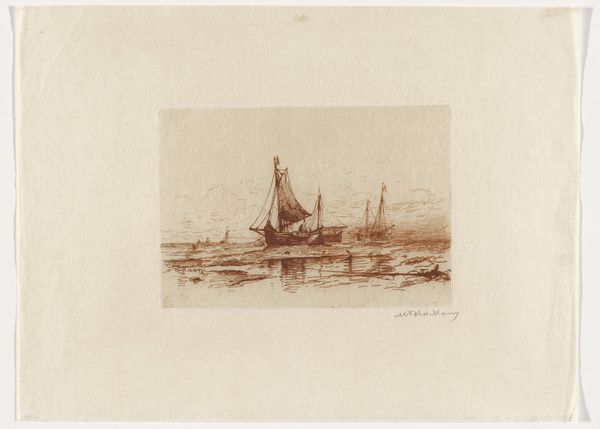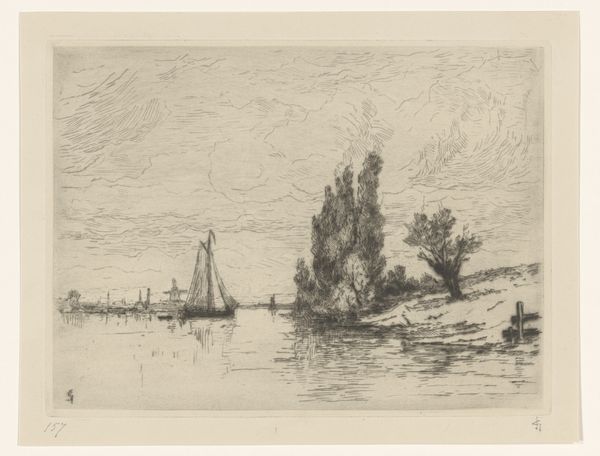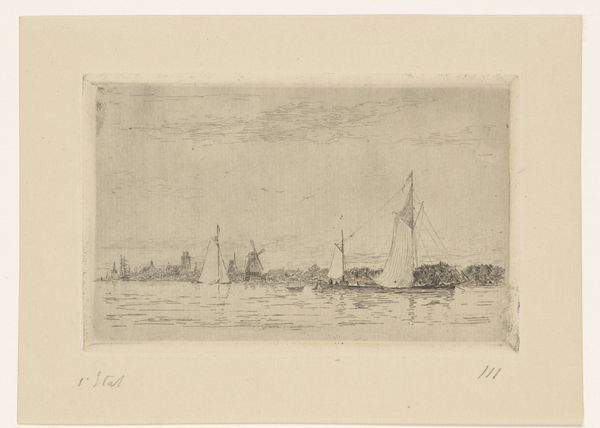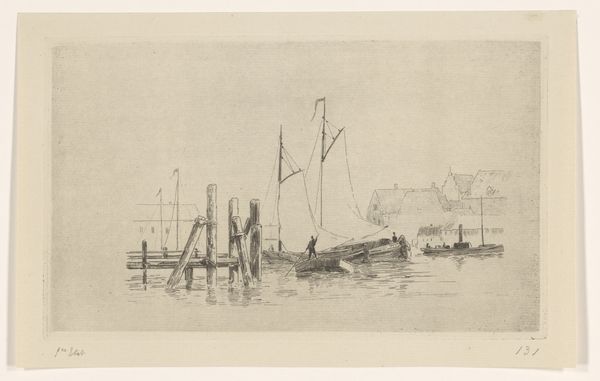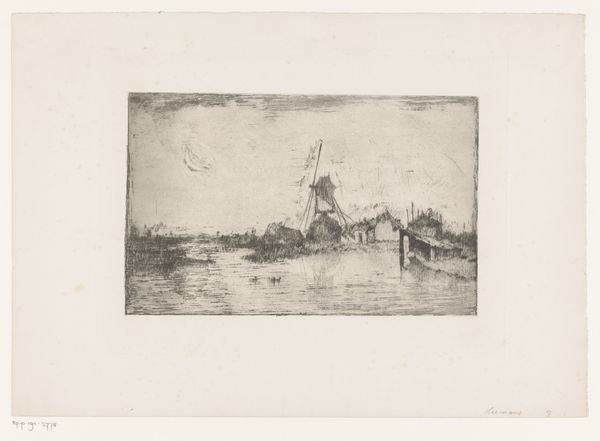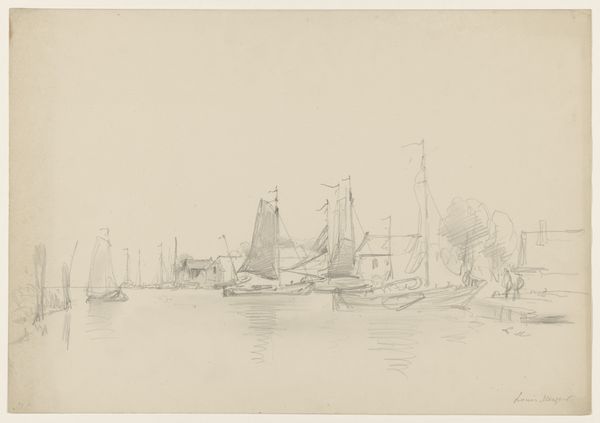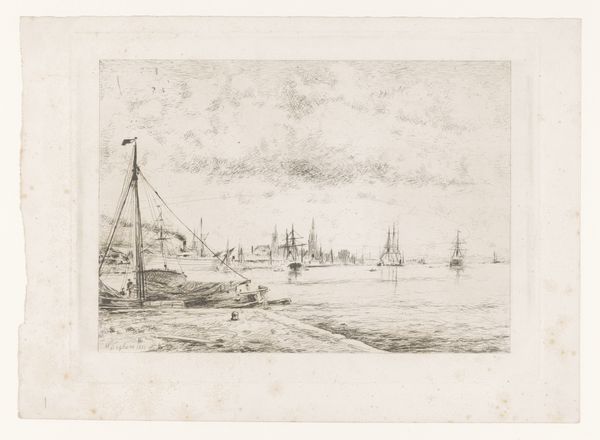
aquatint, print, etching
#
aquatint
#
dutch-golden-age
# print
#
etching
#
old engraving style
#
landscape
#
river
#
etching
#
realism
Dimensions: height 100 mm, width 244 mm
Copyright: Rijks Museum: Open Domain
Curator: Ah, "Gezicht op de Schie," a print made around 1890 by Philip Zilcken, currently residing here at the Rijksmuseum. It's rendered through aquatint and etching. Editor: It feels melancholic to me. The muted tones and the hazy distance... It almost seems to evoke a sense of industrial expansion quietly encroaching upon a traditional way of life on the water. Curator: That's an interesting read. For me, the image possesses a kind of stillness. Water has forever carried symbolic weight as life's eternal source. See how Zilcken captures its surface in a relatively unadorned style; his subtle use of light on the water suggests that symbolic significance, if you ask me. Editor: Maybe. I’m curious about this scene in relation to broader social histories. Can we see the vessels not simply as "boats," but also as tools shaping labor systems of that period and gender dynamics involved in waterside labor? Were these ships used for trade? Were there political implications to who was allowed on this waterway, or even simply to own property overlooking it? Curator: Well, the tower in the distance acts as an ancient marker— a kind of witness. We have buildings and sailboats, enduring symbols that carry generational meanings. Their persistent, historical images embedded in art, stories, and societal structures transmit traditions. Editor: But who gets to author that narrative, right? Consider how landscape art of the era frequently overlooked or obscured the labor that sustained the depicted scene. The calm surface hides so much beneath it. Curator: That's fair, and the "calm" does leave me a little unsettled... The perspective offers this almost timeless representation of a river in motion—but I see something comforting and hopeful at the image's edges, in the shadows, rather than hidden on its surface. The shadow suggests that there may still be secrets out there... but I wouldn't look only at sociopolitical factors to find meaning here. Editor: Sure, it is a place of personal reflections and solace. I guess it is really about considering those complex entanglements between place, labor, and identity within such seemingly peaceful, unassuming landscapes. Curator: Agreed, looking closely certainly unveils that interwoven narrative. Editor: Absolutely. The Schie reveals just as much in what's implied as in what's explicitly depicted, inviting us to reflect on our own perspectives and presumptions.
Comments
No comments
Be the first to comment and join the conversation on the ultimate creative platform.
